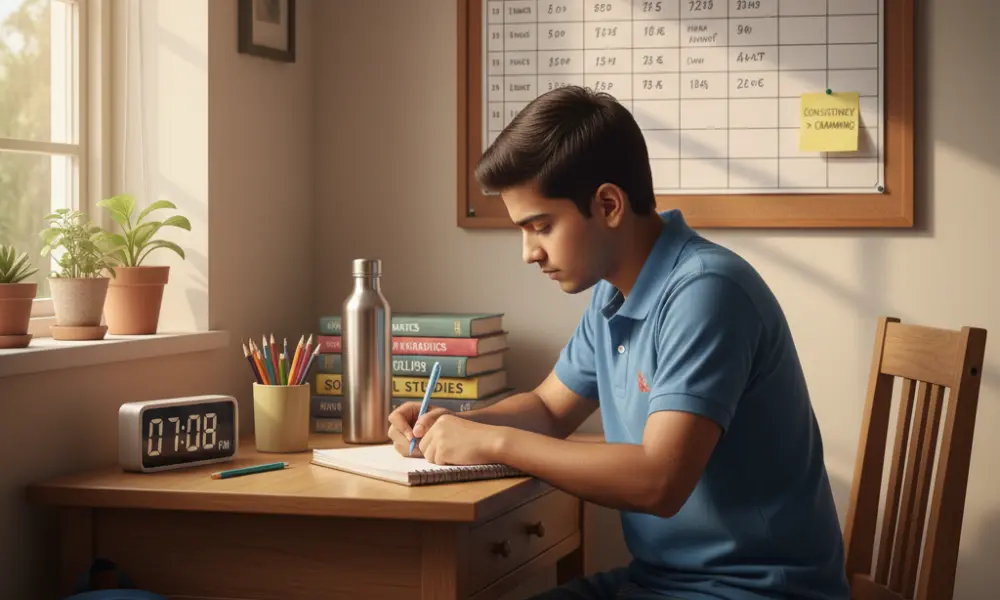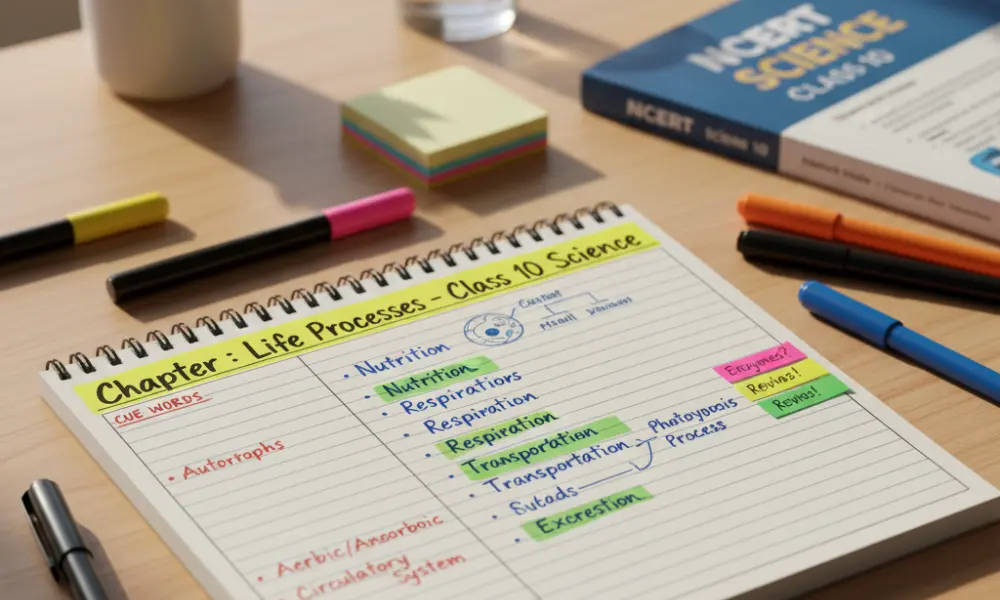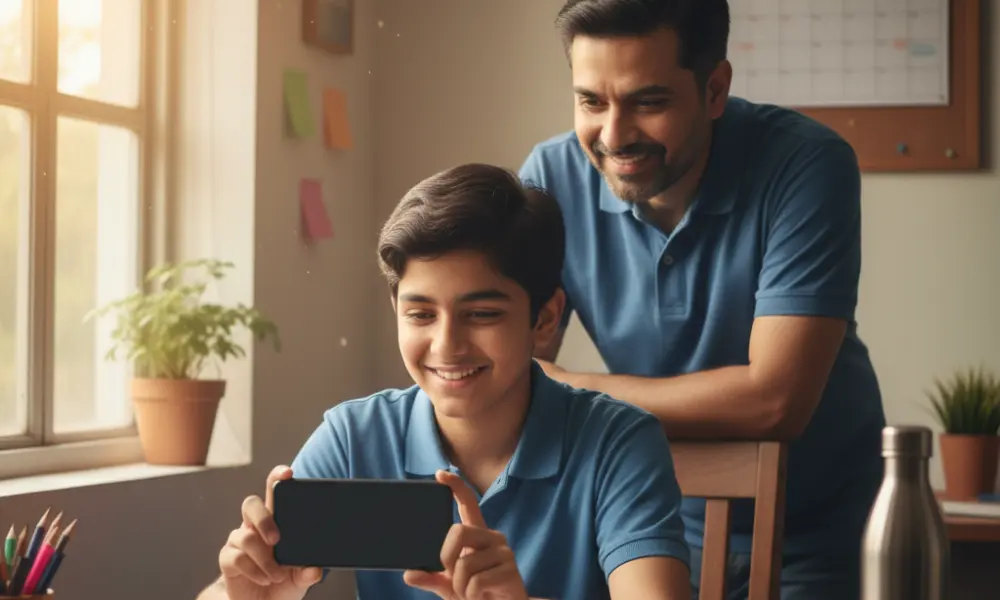A comprehensive guide to transforming CBSE classrooms through strategic technology integration
Discover practical strategies and digital tools that CBSE teachers can use to enhance classroom learning. This guide covers everything from educational apps and multimedia lessons to blended learning approaches and overcoming infrastructure challenges in Indian schools.

The digital revolution has reached the doorstep of every Indian classroom, but many CBSE teachers still struggle with the question: How can technology truly enhance learning without becoming a distraction? The answer lies not in simply adding gadgets to lessons, but in thoughtful integration that amplifies teaching effectiveness while maintaining the human connection that makes great educators irreplaceable.
Technology integration in CBSE classrooms isn't about replacing traditional teaching methods—it's about enhancing them. When done right, digital tools can transform abstract concepts into visual experiences, make learning more interactive, and provide personalized support to students with diverse learning needs. This comprehensive guide will help teachers navigate the digital landscape with confidence and purpose.
Before diving into solutions, it's crucial to understand the real challenges that CBSE teachers face when trying to integrate technology. The most common obstacle isn't the lack of tools—it's the overwhelming variety of options and uncertainty about where to start.
Many teachers express concerns about technology becoming a crutch rather than a catalyst for learning. There's also the persistent worry about screen time and its impact on student attention spans. Additionally, the digital divide remains a significant challenge, with some students having limited access to devices or reliable internet connectivity at home.
Infrastructure limitations in many Indian schools compound these challenges. Power outages, slow internet connections, and outdated hardware can turn what should be seamless technology integration into frustrating experiences for both teachers and students. However, these challenges aren't insurmountable—they simply require strategic planning and creative solutions.
Another significant hurdle is the time investment required for teachers to learn new technologies while managing heavy teaching loads. The pressure to complete CBSE syllabus within tight timelines often leaves little room for experimentation with new tools, creating a cycle where teachers stick to familiar methods despite recognizing the potential benefits of digital integration.
The key to successful technology integration lies in choosing the right tools for specific educational objectives. Rather than trying to master every available platform, teachers should focus on a core set of versatile tools that can serve multiple purposes across different subjects and grade levels.
Google Slides and Microsoft PowerPoint remain foundational tools, but modern versions offer features that go far beyond static presentations. Teachers can embed interactive elements, real-time polls, and multimedia content that keeps students engaged. For CBSE Mathematics teachers, tools like GeoGebra can transform abstract geometric concepts into manipulable visual models that students can explore independently.
Canva for Education provides templates specifically designed for classroom use, allowing teachers to create visually appealing materials without extensive design skills. The platform includes CBSE-aligned templates for subjects ranging from Science experiments to Social Studies timelines, making it easier to create professional-looking educational content.
Google Classroom has become increasingly popular among CBSE schools for its seamless integration with other Google tools and its ability to streamline assignment distribution and collection. Teachers can create different streams for different subjects or classes, share resources instantly, and provide individual feedback on student work.
Padlet serves as a digital bulletin board where students can collaborate on projects, share ideas, and build collective knowledge. For English teachers conducting poetry analysis or Social Studies teachers exploring historical events, Padlet provides a space where every student can contribute meaningfully to class discussions.
Kahoot transforms traditional quizzes into engaging game-like experiences that students genuinely enjoy. Teachers can create custom quizzes aligned with CBSE learning objectives or adapt existing quizzes to match their specific curriculum needs. The real-time feedback feature helps teachers identify knowledge gaps immediately rather than discovering them weeks later through formal assessments.
Google Forms provides a versatile platform for both formative and summative assessments. Teachers can create self-grading quizzes, conduct student surveys to gauge understanding, and collect data on learning preferences. The automatic response collection and analysis features save valuable time that teachers can redirect toward instruction and student support.
The most effective multimedia lessons don't simply add technology for its own sake—they use digital tools to address specific learning challenges and enhance student understanding. The goal is to create experiences that would be impossible or impractical without technology.
For Science teachers, virtual laboratory simulations can provide safe, cost-effective ways for students to conduct experiments that might be too dangerous or expensive in physical labs. Platforms like PhET Interactive Simulations offer physics and chemistry simulations that allow students to manipulate variables and observe outcomes in real-time.
History teachers can use virtual field trips to bring distant civilizations into the classroom. Google Earth's historical imagery feature allows students to explore ancient cities, while virtual museum tours provide access to artifacts and exhibitions from around the world. These experiences create emotional connections to learning content that traditional textbook approaches often struggle to achieve.
Language teachers can leverage multimedia to provide authentic cultural contexts for learning. Short video clips, music, and interactive stories help students understand not just the mechanics of language but also its cultural significance. Tools like Flipgrid allow students to practice speaking skills by recording video responses, providing opportunities for oral assessment even in large classes.
Effective multimedia lessons accommodate visual, auditory, and kinesthetic learners simultaneously. Visual learners benefit from infographics, mind maps, and video content. Auditory learners engage with podcasts, recorded lectures, and discussion-based activities. Kinesthetic learners need interactive simulations, drag-and-drop activities, and opportunities to manipulate digital objects.
The key is layering these elements thoughtfully rather than overwhelming students with sensory input. A well-designed lesson might begin with a brief video introduction, include an interactive element for exploration, and conclude with a collaborative discussion or reflection activity.
The educational app market offers thousands of options, but successful integration requires careful selection based on curriculum alignment, pedagogical value, and practical implementation considerations. Teachers should evaluate apps not just for their features, but for how well they support specific learning objectives.
For CBSE Mathematics, apps like Photomath can help students understand problem-solving steps, while teachers can use them to create worked examples or identify common error patterns. However, the key is teaching students when and how to use such tools appropriately rather than becoming dependent on them for basic calculations.
Language learning benefits significantly from apps that provide pronunciation practice and vocabulary building. Duolingo and similar platforms can supplement classroom instruction, but teachers need to guide students toward features that align with CBSE curriculum requirements rather than allowing unfocused exploration.
Rather than using isolated apps, successful teachers create ecosystems where different platforms work together. For example, a Social Studies teacher might use Google Earth for geographical exploration, Padlet for collaborative research collection, and Google Slides for student presentations, with all activities connected through a central Google Classroom hub.
This integrated approach reduces the cognitive load on students who don't need to learn multiple login procedures and interface conventions. It also allows teachers to track student progress across different activities and platforms more effectively.
Blended learning combines the best aspects of traditional classroom instruction with the flexibility and personalization that digital tools provide. For CBSE teachers, this approach offers ways to extend learning beyond classroom walls while maintaining the interpersonal connections that support student motivation and engagement.
The flipped classroom model works particularly well for subjects that require both conceptual understanding and practical application. Students can watch instructional videos or complete readings at home, then use classroom time for discussion, problem-solving, and hands-on activities. This approach maximizes the value of face-to-face interaction time while allowing students to learn basic concepts at their own pace.
Digital platforms enable differentiated instruction that would be difficult to manage in traditional classroom settings. Teachers can provide additional practice materials for students who need reinforcement while offering extension activities for those ready for advanced challenges. This personalization is particularly valuable in diverse CBSE classrooms where student preparation levels vary significantly.
Learning management systems can track student progress and automatically suggest appropriate next steps. This data-driven approach helps teachers identify students who might be struggling before problems become serious, enabling timely interventions that support academic success.
The most successful blended learning implementations preserve and enhance human relationships rather than replacing them with digital interactions. Technology should facilitate more meaningful teacher-student and peer-to-peer connections, not substitute for them.
Regular check-ins, both digital and in-person, help teachers monitor not just academic progress but also student well-being and engagement. Digital tools can provide data about learning patterns, but human interpretation and response remain essential for supporting the whole student.
Technology transforms assessment from a periodic event into an ongoing process that provides continuous feedback to both teachers and students. Digital assessment tools can provide immediate feedback on student understanding, allowing for real-time instructional adjustments that improve learning outcomes.
Formative assessment tools like exit tickets, quick polls, and short quizzes help teachers gauge student understanding throughout lessons rather than waiting for formal tests. This approach aligns well with CBSE's emphasis on continuous and comprehensive evaluation, providing multiple data points about student learning rather than relying solely on high-stakes examinations.
Digital tools enable assessment methods that more closely mirror real-world applications of knowledge. Students can create multimedia presentations, develop websites, produce videos, or build interactive projects that demonstrate deep understanding rather than mere memorization.
Portfolio-based assessment platforms allow students to collect and reflect on their learning over time, developing metacognitive skills that support lifelong learning. Teachers can track student growth and provide targeted feedback based on evidence of learning progression rather than isolated performance snapshots.
Learning analytics provide insights into student learning patterns that can inform instructional decisions. Teachers can identify topics that consistently challenge students, recognize successful teaching strategies, and adjust their approaches based on evidence rather than intuition alone.
However, data interpretation requires professional judgment and understanding of individual student contexts. Technology provides information, but teachers must synthesize this data with their knowledge of student backgrounds, learning styles, and personal circumstances to make appropriate instructional decisions.
Successful technology integration requires ongoing professional development that goes beyond basic tool training. Teachers need opportunities to explore how digital tools can enhance their specific subject areas and teaching styles, rather than adopting one-size-fits-all approaches.
Peer collaboration often provides the most valuable professional development opportunities. Teachers can observe colleagues using technology effectively, share successful strategies, and troubleshoot challenges together. Professional learning communities focused on technology integration create supportive environments for experimentation and growth.
Many teachers feel overwhelmed by the pace of technological change, but confidence builds through gradual implementation and practice. Starting with one or two tools and mastering them thoroughly before adding new platforms creates a foundation for continued growth.
Student feedback can provide valuable insights into the effectiveness of technology integration efforts. Students often have intuitive understanding of digital tools and can offer suggestions for improvement or alternative approaches that teachers might not consider.
The educational technology landscape evolves rapidly, but teachers don't need to adopt every new tool or trend. Instead, focus on understanding how emerging technologies might address persistent educational challenges or enhance successful existing practices.
Professional development should emphasize pedagogical principles that remain constant even as specific tools change. Understanding how students learn, what motivates engagement, and how to provide effective feedback provides a framework for evaluating and implementing new technologies as they emerge.
Infrastructure limitations don't have to prevent effective technology integration, but they do require creative solutions and realistic expectations. Teachers can maximize impact by focusing on tools that work reliably with available resources rather than struggling with platforms that exceed infrastructure capabilities.
Offline-capable tools and downloadable resources provide alternatives when internet connectivity is unreliable. Many educational apps and platforms offer offline modes that allow students to work without constant internet access, syncing progress when connections are restored.
The digital divide requires intentional strategies to ensure all students can participate in technology-enhanced learning. This might involve providing alternative assignments for students without device access, creating take-home materials that don't require internet connectivity, or establishing partnerships with local libraries or community centers.
Teachers can also leverage the devices that students do have access to, such as smartphones, rather than assuming all students need laptops or tablets. Many educational activities can be adapted for mobile devices, making technology integration more inclusive.
Sustainable technology integration requires solutions that schools can maintain long-term rather than depending on external funding or support. This often means choosing open-source or low-cost platforms over expensive proprietary solutions, and building internal capacity for technical support and troubleshooting.
Community partnerships can provide resources and expertise that individual schools might lack. Local businesses, parent volunteers, or student tech teams can provide support for technology initiatives, creating sustainable ecosystems that benefit everyone involved.
The future of CBSE education lies not in choosing between traditional and digital approaches, but in thoughtfully combining them to create learning experiences that prepare students for success in an increasingly connected world. Technology integration is most effective when it amplifies great teaching rather than attempting to replace it.
Teachers who embrace technology as a learning partner rather than a teaching replacement will find themselves better equipped to meet diverse student needs, engage reluctant learners, and prepare students for future academic and career success. The key is starting small, building confidence through practice, and always keeping student learning at the center of every technological decision.
As educational technology continues to evolve, the teachers who thrive will be those who view learning as a lifelong journey—not just for their students, but for themselves as well. By approaching technology integration with curiosity, patience, and pedagogical wisdom, CBSE teachers can create classrooms where tradition and innovation work together to unlock every student's potential.

How Teachers Can Use AI Tools to Personalize Homework and Assessments
Discover how AI can transform homework and assessments for personalized learning.

Daily Study Routine for Class 9 and 10 CBSE Students
Crafting the ideal study schedule for CBSE success

Note-Taking Systems That Actually Work for CBSE Students
Master effective note-taking techniques for better exam preparation.

How Edzy’s AI Tutor Helps Students Prepare Smarter, Not Harder – Real Results from CBSE Learners
Discover how Edzy transforms learning for CBSE students through AI and gamification.